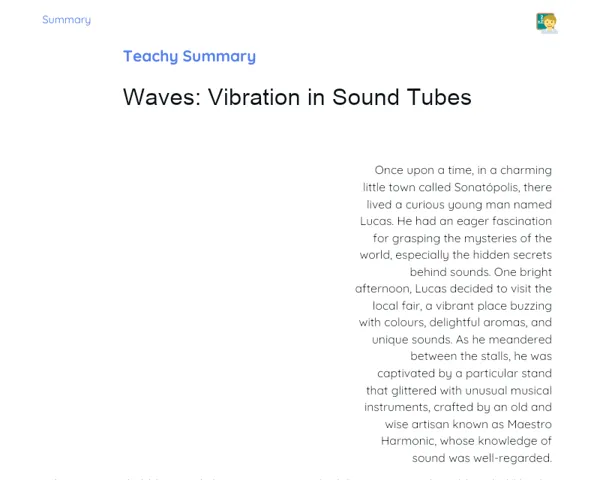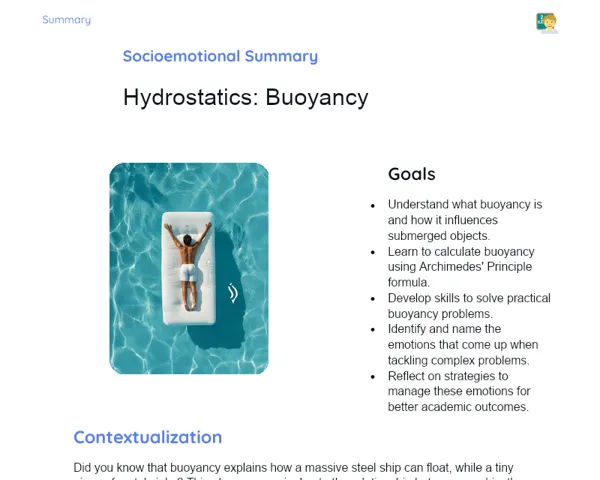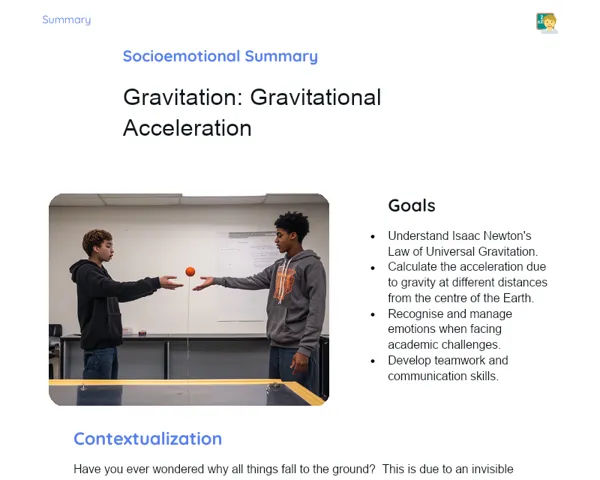Socioemotional Summary Conclusion
Goals
1. Grasp the basic principles of capacitance.
2. Discover the structure of a spherical capacitor.
3. Calculate the capacitance of spherical capacitors using their inner and outer radii as well as the dielectric material embedded between the spheres.
Contextualization
🔌 Picture yourself developing innovative electronic devices! Spherical capacitors are key components in these undertakings, commonly used in microelectronic systems and precision medical equipment. Understanding their operation and how to compute their capacitance is vital, not just for your physics lessons, but also in practical, real-world scenarios. Ready to explore the secrets of this intriguing technology together? 🌍✨
Exercising Your Knowledge
Spherical Capacitor
A spherical capacitor consists of two concentric conductive spheres separated by a dielectric substance. The inner sphere has a radius 'a' and the outer sphere has a radius 'b'. This specific configuration facilitates effective electric charge storage in high-tech applications like medical devices and microelectronics.
-
Structure: Made up of two conductive spheres with one inside the other, separated by a dielectric.
-
Function: Stores electric charge between the spheres, using the dielectric to enhance functionality.
-
Applications: Used in technologies demanding high precision, such as medical devices and microelectronics.
Capacitance
Capacitance refers to the ability of a capacitor to hold electric charge per unit of potential difference (V) between its plates. For spherical capacitors, the capacitance formula is: C = 4πε₀εᵣ(ab)/(b-a), where ε₀ is the permittivity of free space and εᵣ represents the relative permittivity of the dielectric.
-
Definition: The capacity to store electric charge per unit of potential difference.
-
Formula: C = 4πε₀εᵣ(ab)/(b-a), crucial for computing the capacitance of spherical capacitors.
-
Importance: Essential for the design and understanding of efficient electrical devices.
Permittivity
Permittivity is an indication of how much a material resists the establishment of an electric field within it. It is expressed as the product of the permittivity of free space (ε₀) and the relative permittivity (εᵣ) of the material. Higher permittivity materials are more effective at storing electrical energy.
-
Definition: A measure of a material's resistance to the creation of an electric field.
-
Formula: ε = ε₀εᵣ, with ε₀ being the permittivity of free space and εᵣ that of the material.
-
Relevance: Critical for the efficiency of spherical capacitors and various electrical devices.
Key Terms
-
Spherical Capacitor: A device designed to store electric charge using two concentric conductive spheres.
-
Capacitance: The capacity of a capacitor to hold electric charge.
-
Permittivity: A measure of a material's opposition to the establishment of an electric field.
For Reflection
-
How might the structure of a spherical capacitor influence its ability to store electric charge effectively?
-
In what ways could knowledge of capacitance and permittivity benefit your future projects, whether in your studies or career?
-
How did you feel while grappling with these complex concepts, and how did you navigate those feelings during class?
Important Conclusions
-
Spherical capacitors are critical components in a variety of advanced technologies.
-
Capacitance represents the ability to hold electric charge, which is key to understanding how spherical capacitors operate.
-
The permittivity of the dielectric material is fundamental for a spherical capacitor's effectiveness.
-
Mastering the mathematical formulas for capacitance in spherical capacitors enhances your ability to apply this knowledge practically.
Impacts on Society
Spherical capacitors are essential in our society, impacting advanced technologies like medical equipment and microelectronics, which enhance precision and efficiency in healthcare as well as consumer tech. For instance, in medical imaging devices, capacitors stabilize electric currents essential for producing high-quality images that aid in disease diagnosis.
Additionally, understanding capacitance and permittivity can ignite the imaginations of budding engineers and scientists, encouraging them to innovate new technologies and solutions. Feeling connected to the significance of these applications can encourage students to explore the subject in depth, considering its ramifications for improving quality of life and advancing modern technology.
Dealing with Emotions
💡 To navigate your emotions while studying spherical capacitors, I suggest employing the RULER method. Begin by identifying and noting the emotions you experience while tackling these concepts: frustration, curiosity, satisfaction? Next, explore why you feel this way and how it affects your learning. Clearly articulating these feelings allows for appropriate expression, be it through conversation with peers or through journaling. Lastly, practice managing these emotions, perhaps through breathing exercises or taking strategic breaks during your study sessions, to maintain a positive and productive emotional state.
Study Tips
-
🌟 Review Regularly: Revisit the fundamental concepts of capacitance, the structure of capacitors, and permittivity to reinforce your understanding.
-
📝 Practice Problems: Engage with additional exercises that involve calculating capacitance for spherical capacitors.
-
🔍 Explore Applications: Investigate how spherical capacitors are utilized in contemporary technologies to make learning more relevant and engaging.



